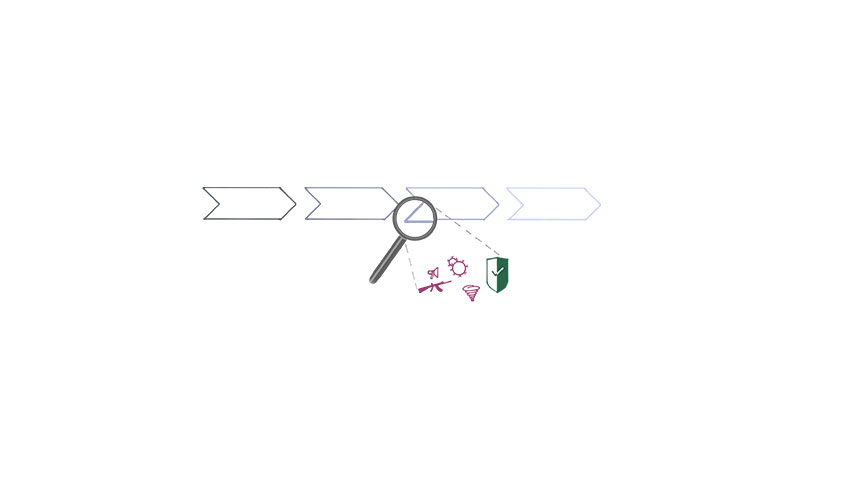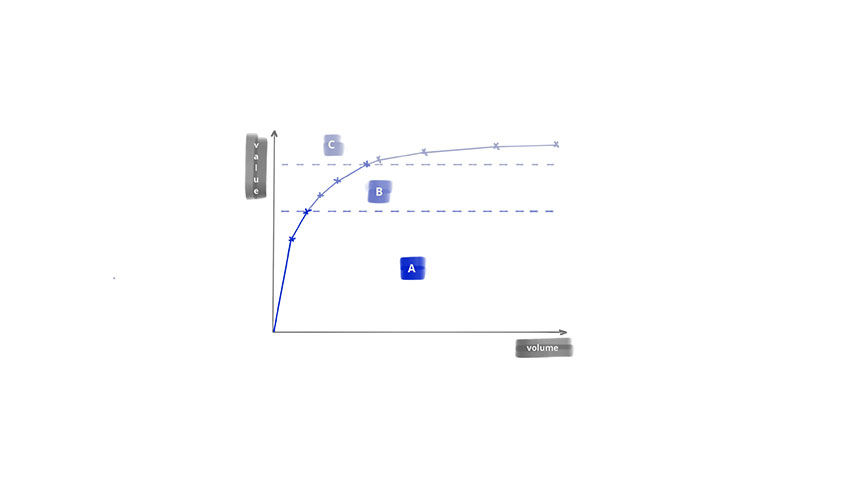
2020 – The spreading coronavirus causes disruptions in the supply chain of many companies. These difficulties have already led some companies to the brink of insolvency [1].
2019 – Iran retains a foreign oil tanker ship resulting in rising concerns regarding a blockage of the Strait of Hormus. As a result, the oil price shots up [2].
2011 – An earthquake and a subsequent tsunami destroy a Toyota supply plant. The resulting supply shortage causes a breakdown in production processes, thus considerably delaying the delivery of cars [3].
Supply Chain as an Optimisation Task
In our globalised world, the value chain of any product generally is a series of interrelated activities of several companies and countries. Consequently, the design of the supply chain is a critical task which needs to consider several targets. Unfortunately, some of the targets are contradicting.
One of the most obvious targets of supply chain optimisation is cost reduction. Suppliers and source countries are selected to minimise the cost of production to allow for low product costs at high margins.
Logistics are another important optimisation aspect. Lead time, suppliers’ reliability and flexibility are important factors, especially in just-in-time manufacturing. As delayed deliveries can easily result in production downtimes, logistics are often almost as important as costs.
Lately, sustainability and carbon footprint are becoming more important in supply chain design. This is especially true for B2C products; however, legislation is expected to provide more rigid guidelines and requirements companies need to comply with.
Besides, the examples above highlight another target parameter for supply chain optimisation: risk.
Risks in the Supply Chain
There may be many different types of risks in a company’s supply chain. Probably the most obvious is potential quality issues. Many companies today address these by incoming goods inspections and frequent supplier audits.
What is often ignored is the dependence on individual suppliers. A single source setup strengthens the bargaining position of the supplier and may result in higher costs. At the same time, supply interruptions become more likely as issues in the production of an individual supplier directly impact the entire supply.
Also, if one supplier relies too heavily on one single customer, this may become problematic in the future. A drop in purchase volume, even if it is temporary, may pose a significant threat to the supplier’s ability to survive.
And what is true for depending on a single-source supplier is also true for regional dependency. The issue with regional dependencies is that they do not only affect the supplier location – the problem Toyota was facing after the 2011 tsunami – but also the transportation routes – which became problematic in the Strait of Hormus case.
Supply Chain Risk Analysis
To ensure that their own operations are running smoothly, companies need to evaluate their entire supply chain. However, given the vast number of products, raw material and services which a medium to large-size corporation is sourcing, a detailed analysis of the entire supply ecosystem is neither possible nor economically feasible. Here I’d recommend the ABC analysis. This is a proven tool to identify the critical segments in the supply chain. This approach divides supplies in three categories.
A parts are those which have the highest value and are most critical for the one’s own value creation. These components are normally sourced by highly specialised suppliers, plus they are a significant cost factor and cannot easily be replaced in case of supply issues. For A-parts, a detailed risk analysis of suppliers and sub-suppliers and the systematic integration of risk mitigation measures in the supply chain is a well invested effort.
B parts represent the next segment in a company’s supplies – both with regards to volume and value. For B parts, a risk analysis should include the company’s suppliers in a first step. This significantly reduces the effort compared to the analysis of the entire supply value chain but still allows for systemaitc mitigation planning. If the outcome of the initial supplier risk analysis brings to light any points which require special attention, this may trigger a more detailed analysis for selected parts or suppliers in the B-segment.
The bulk of supplies in terms of volume are usually off-the-shelf articles, so-called C parts. Given the low value and high volume of these parts, a detailed risk analysis does not make sense economically. For risk mitigation, a certain level of redundancy in the supplier base allows a company to avoid unpleasant surprises in case of crisis.
Using the ABC analysis as a guideline for supply chain risk analysis allows to minimise the resources needed to gain an adequate overview of a company’s supply ecosystem. This will enable you to adjust your supply chain and make it more robust, so that your company will be more resilient to local or global crises.
Quellen:
[1] DW (26. Februar 2020). „Coronavirus sprengt die Lieferketten – Wirtschaft droht Lähmung“. DW.com.
[2] FAZ (18. Juli 2019). „Ölpreis steigt nach Tanker-Stopp“. FAZ.net.
[3] Spiegel (13. April 2011). „Toyota-Kunden müssen auf Autos warten“. Spiegel.de.


